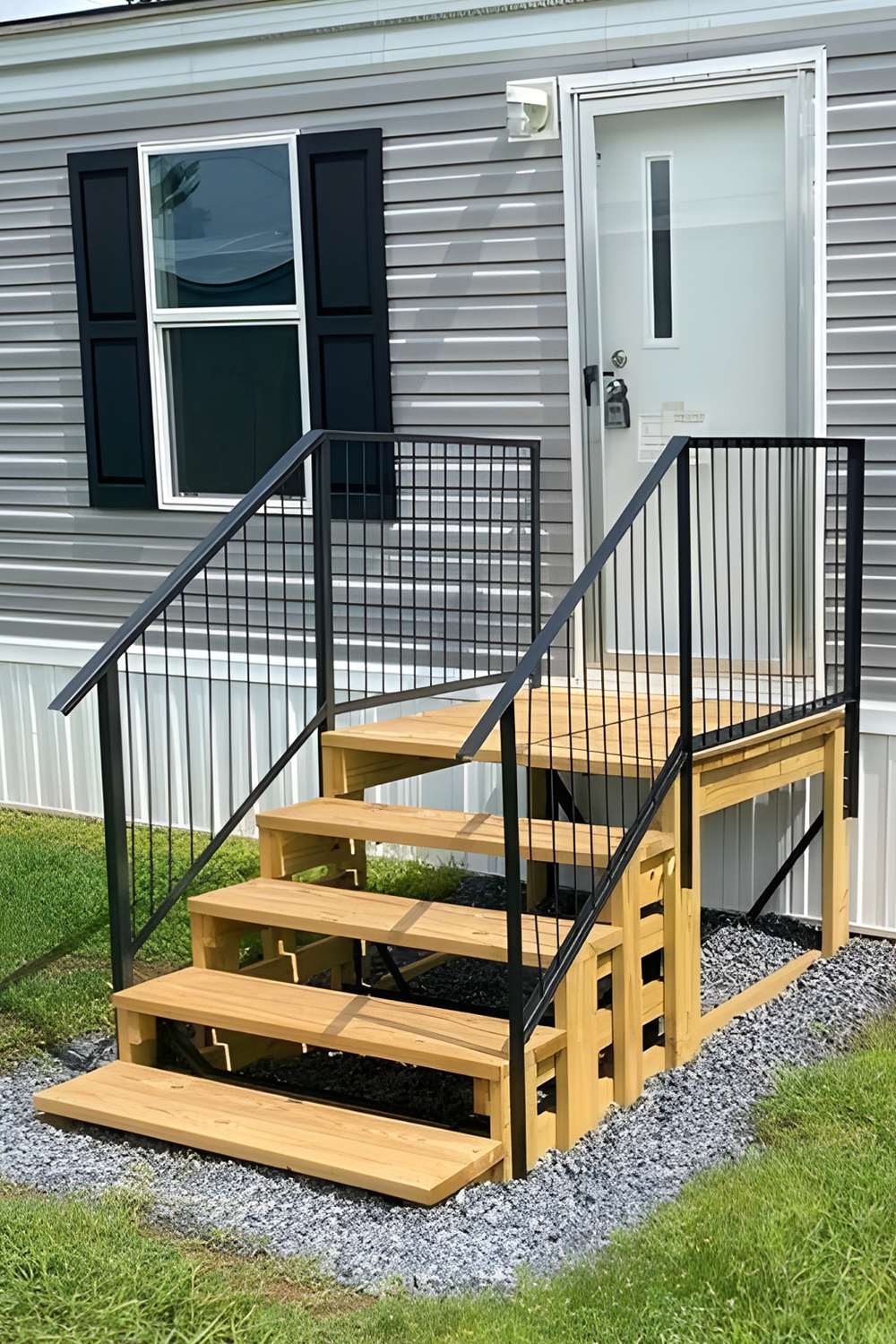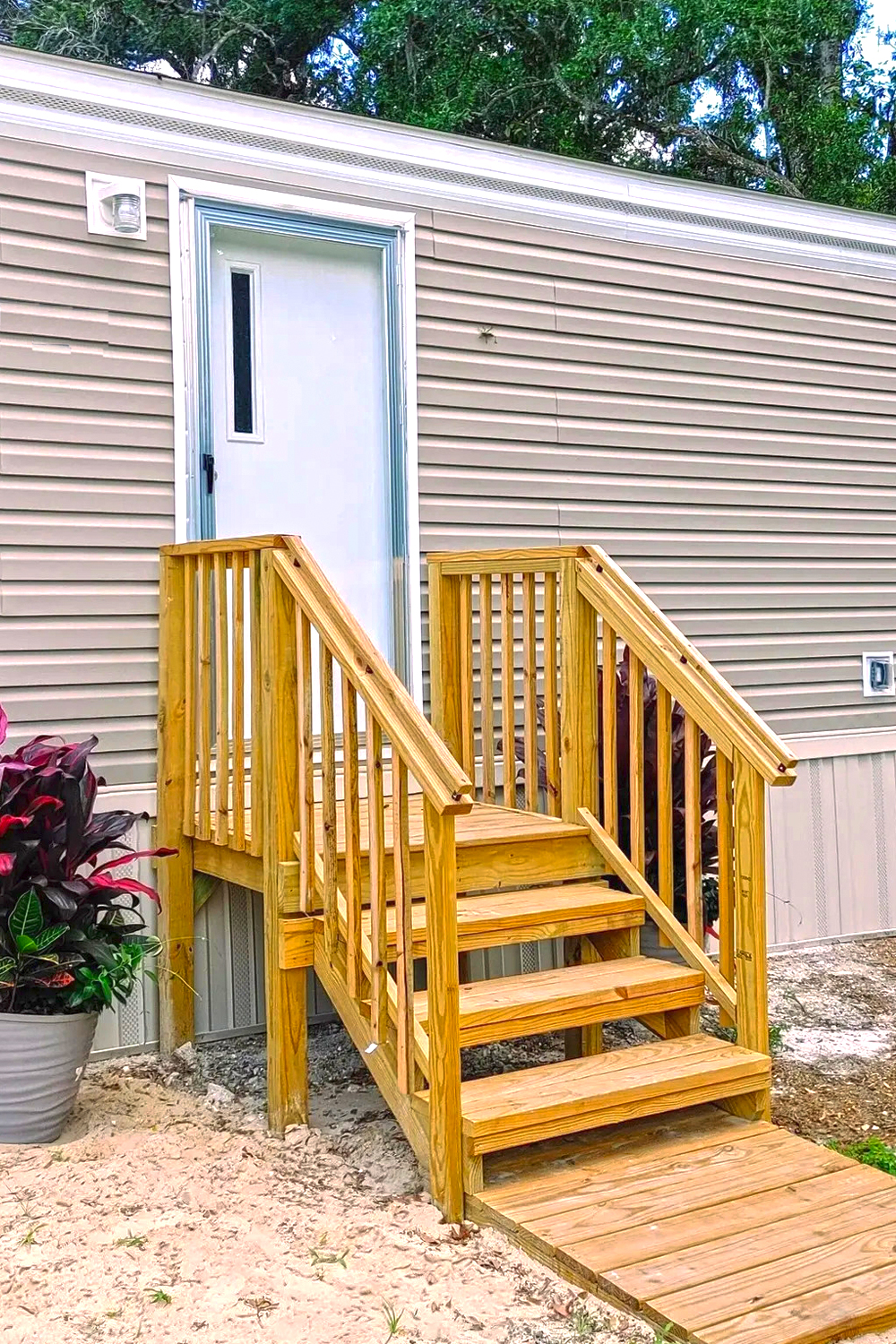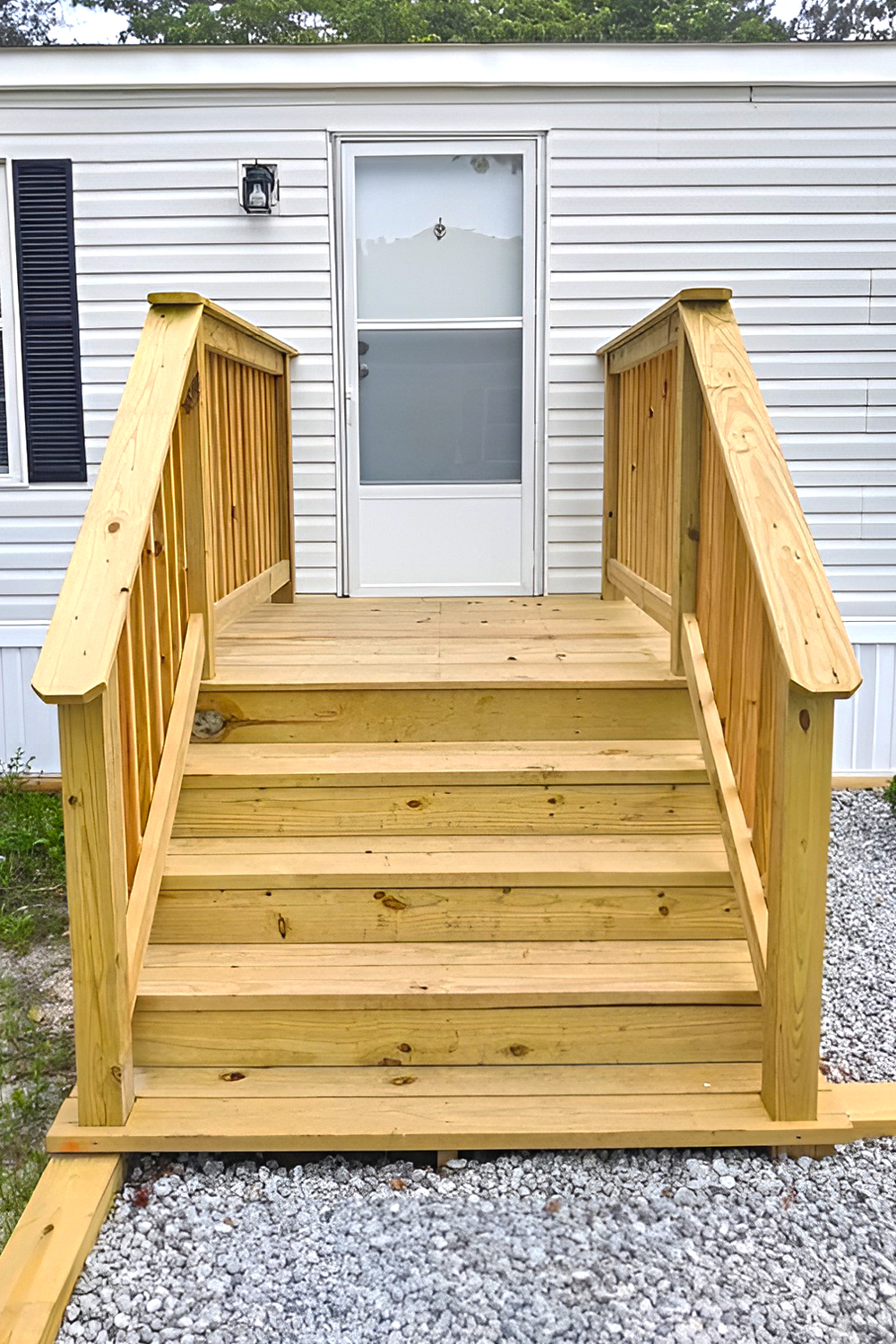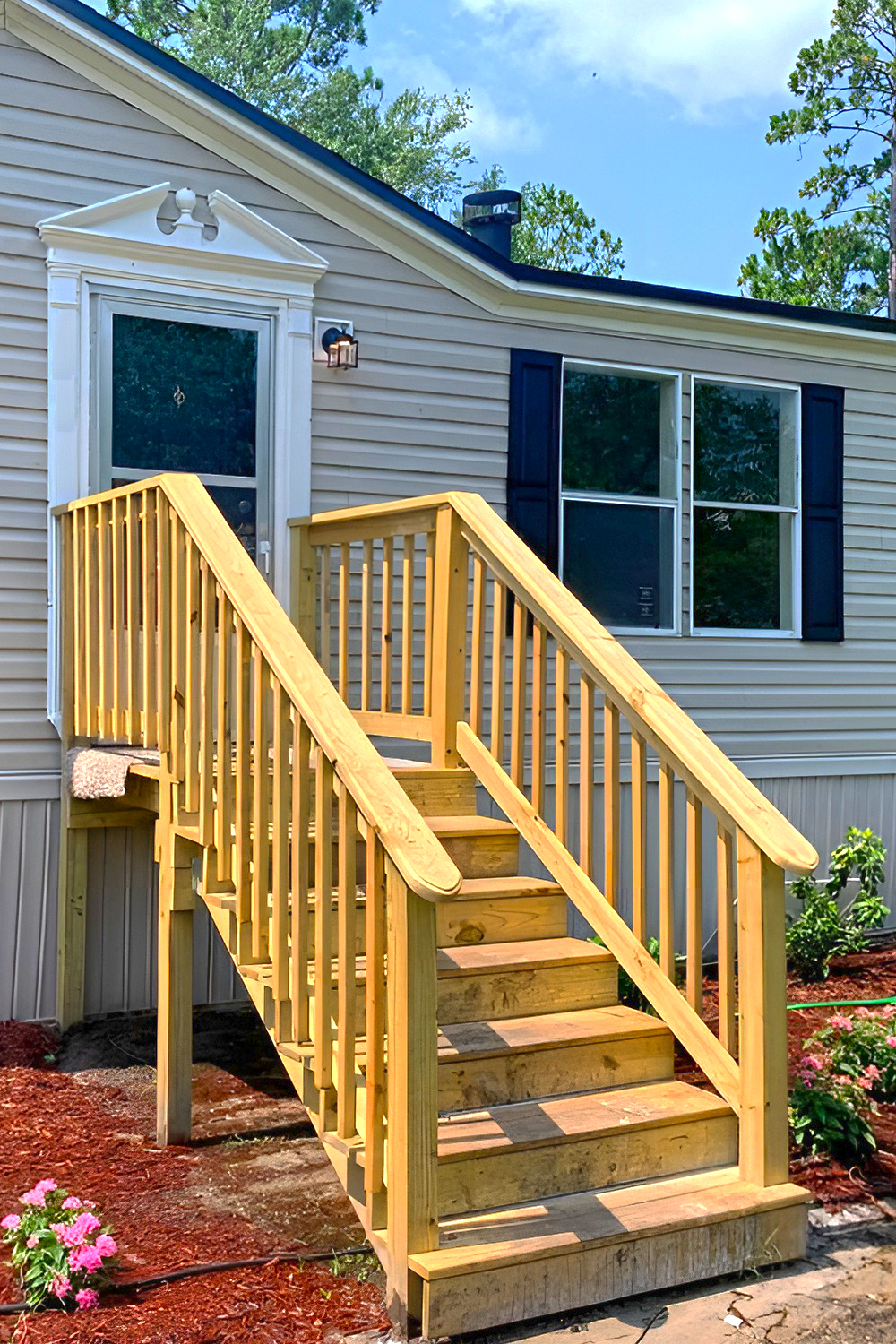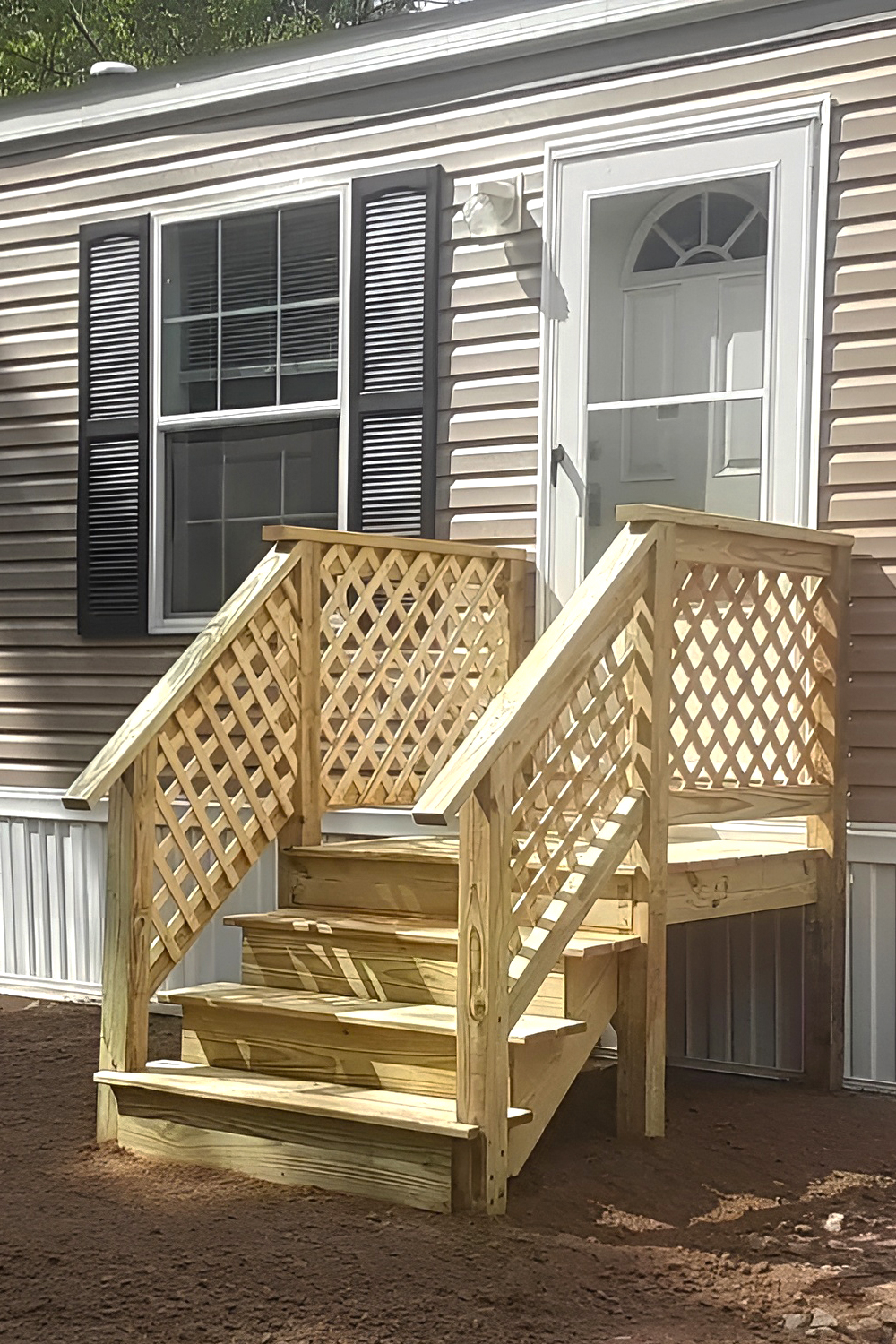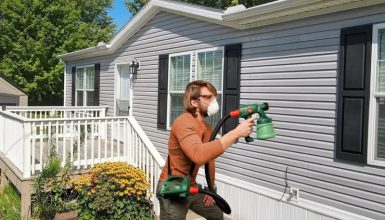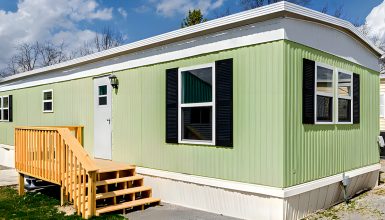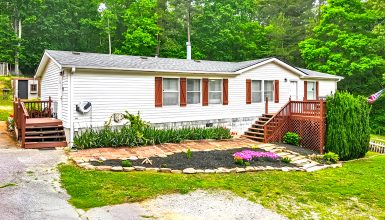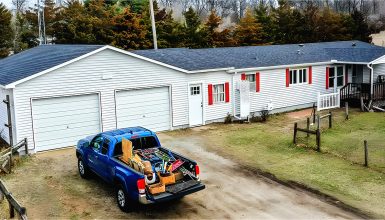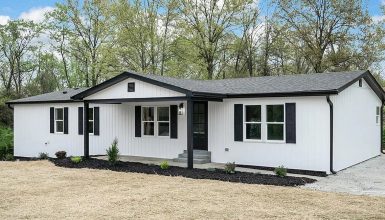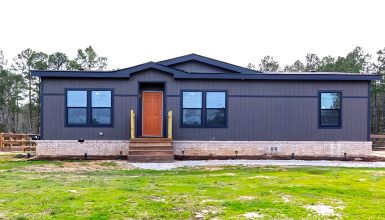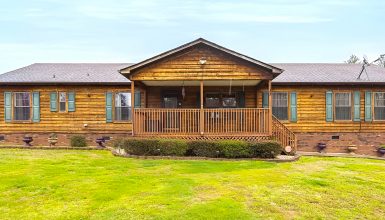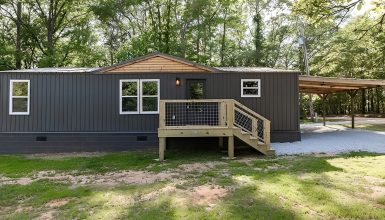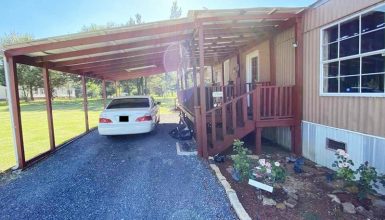Sturdy, safe wood steps for a mobile home are more than just a convenience; they’re a must for safety. Think about it: steps are the first thing you use when you enter your home and the last thing you use when you leave. If they’re wobbly or unsafe, it’s not just a nuisance. It can be dangerous, especially in bad weather or when carrying heavy items. So, let’s explore how to build sturdy, safe wooden steps with a railing for your mobile home exterior.
1. Planning
First, knowing your local building codes is like reading the rule book before playing the game. These codes ensure your steps are safe and up to snuff, preventing any unwelcome surprises during inspections. They cover everything from how wide each step needs to be to how high you can build without needing a permit. It’s all about keeping you and your family safe.
When measuring for your steps, think of it as a simple math problem. The “rise” is how tall each step is, while the “run” is how deep. To get it just right, measure the total height from the ground to your mobile home’s door. Then, divide that by the height you want each step to be. This tells you how many steps you’ll need. Aim for a rise of about 7 inches and a run of at least 10 inches for comfort and safety. This way, you’re not taking giant leaps or tiptoeing up and down.
2. Design Considerations
Designing with safety and accessibility in mind means considering everyone who might use those steps. This includes kids, adults, and anyone with mobility issues. Wide steps, a gentle incline, and sturdy railings make for a safer climb. Plus, adding texture to the step surface or choosing slip-resistant materials helps prevent slips and falls, no matter the weather.
3. Materials
Before you start building, let’s talk about what you’ll need. Picture your steps and railing. They have to be sturdy, right? That’s where pressure-treated lumber comes in. For the frame of the steps, grab some 2x4s. They’re strong and can handle the weight. For the steps themselves, 2x6s will give you the depth and support you need. And for the posts that’ll hold up your railing, 4x4s are perfect—they’re like the strong backbone of your project.
Now, to hold it all together, you’ll want screws and nails that don’t quit when the weather gets tough. Galvanized or stainless steel is the way to go because rust is the last thing you want. And for the railing? You’ve got options. Wood gives a classic look and can be painted to match your home. On the other hand, metal railings offer sleek lines and minimal upkeep. Your choice should match your home’s vibe and your style.
4. Tools Needed
With your materials ready, it’s time to talk tools. These are straightforward, even if you’re not a tool expert. A saw is a must-have for cutting your wood to the correct sizes. A drill will help you put everything together with those screws, making sure your steps are secure. Don’t forget your measuring tape; it’s your best friend in getting all the dimensions right. A level is crucial, too, because wobbly steps are a no-go. They’ve got to be flat and stable. And lastly, a hammer always comes in handy, especially for those nails.
5. Building the Wood Steps
Let’s dive into building those steps. This part is where things start taking shape.
Step 1: Cut the Frame
First up, cutting the frame. You’ll take your 2x4s and cut them to make the frame of your steps. Think of this as the skeleton of your steps. You need two side pieces, known as stringers, and a few cross pieces for each step. These cross pieces give your steps strength and support.
Step 2: Assemble the Frame
Next, put that frame together. Grab your screws and join all the pieces you just cut. It’s crucial to make sure everything is straight and level. If not, your steps might be wonky; we don’t want that. So, take your time and check with a level.
Step 3: Cut and Attach Steps
Now, for the steps themselves. Take your 2x6s and cut them to the width of your steps. These boards will be what you step on, so make sure they’re cut to the correct size. Once cut, attach them to the frame with screws. Make sure each step is firm and doesn’t wobble. And again, check that everything is level. Consistency is critical for safe and comfortable steps.
Step 4: Support Posts
Before getting to the railing, we must put in support posts. Dig holes at the bottom and top of your steps for the 4×4 posts. The holes should be deep, about a third of the post’s height, to ensure your steps are stable. This is what will hold up the railing and keep everything sturdy.
Step 5: Install Posts
After digging, place your posts in the holes. You can use either concrete or dirt to fill the holes back in. If you choose concrete, it’ll be extra sturdy. Either way, make sure the posts are perfectly vertical using a level. This step is crucial for a solid and safe structure.
Step 6: Attach the Railing
With the posts secure, it’s time to add the railing. Attach horizontal rails between the posts with screws. If you’re using wood, you might need to cut the rails to fit right. This railing isn’t just for looks; it keeps everyone safe, especially in slippery conditions.
6. Finishing Touches
After building your steps, it’s time to make them look great and ensure they’re safe.
Sanding
Start with sanding. This step is all about making sure no one gets splinters. Plus, it makes your steps smooth and ready for paint or stain. Sand every surface, from the steps to the railing. It’s a bit of work but worth it for your smooth finish.
Staining or Painting
Next, choose between staining or painting. Both options protect your wood from the weather and make it look nice. Stains can show off the wood’s natural beauty, while paints come in many colors to match your home. Whatever you choose, make sure it’s meant for outdoor use. This way, your steps can handle rain, sun, and everything.
Safety Check
Now, for a safety check. Go over every inch of your steps. Make sure all screws and nails are tight. A loose screw can make your steps unsafe, and a loose nail can be a real trip hazard. This check helps make sure your steps are safe for everyone.


